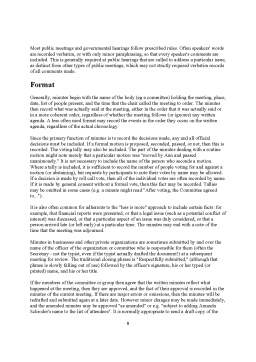Cuprins
- 1. The layout of business letters 2
- 2. Agendas
- Explanation
- Form of agenda
- Template of Agenda
- Minutes
- Format
- 3. E-mails + Minutes
- Origin
- Host-based mailsystems
- In society
- Flaming
- E-mail bankruptcy
- In business
- Tracking of sent mail
- Format
- 4.REPORTS
- Enterprise reporting
- Enquiry Letters
Extras din proiect
1. The layout of business letters
As in all professional writing, business letters should be brief but clear. The relationship between the writer and the recipient should be stated at the outset. If action on the part of the recipient is requested, then that action should be specified. The tone of a business letter depends on the recipient: if it’s someone with whom you’ve worked closely for several years, the tone may be warm and friendly, but in general business correspondence tends to be formal. Even if your letter is registering a complaint, your tone should be polite.
Business letters, written on standard business letterhead, should be written in a block format, with everything beginning at the left margin.
Date: Month (spelled out), day (followed by a comma), year
Inside Address: The inside address belongs two lines after the date (this is the same address that appears on the envelope). It includes the recipient’s name preceded by “Mr.,” “Ms.,” “Dr.,” etc.; the title of office (“President”) follows the name on the same line if the title is short; then the full address: street, city, state (official abbreviation only), ZIP code
Salutation: “Dear” followed by title, last name, colon. Save “To Whom It May Concern” for recommendations and testimonials, and avoid “Gentlemen” and “Dear Sir”; they’re gender-specific.
Body of letter: The body of the letter begins two lines below the salutation and uses short, single-spaced paragraphs. State the purpose for and any connection with the recipient in the first paragraph. Describe what’s wanted in the middle of the letter’s body, and request specific action at the end of the body.
Close: Insert the close two lines below the last line of the letter. Capitalize the first word; conclude with a comma.
Signature: Leave three lines of space after the close for the signature. The signature should be signed in ink with the signatory’s name typed one line below and the title typed one line below that.
Typist’s initials: If the letter is typed by someone other than the writer, then the typist’s initials should be inserted below the typed name of the signatory; capitalize the writer’s initials, and use lower case for the typist’s.
Enclosures: “Enclosures” (or “Encl.”) indicates that additional material should be included.
Copies: List other recipients alphabetically (or by rank).
2. Agendas
An agenda is a list of meeting activities in the order in which they are to be taken up, beginning with the call to order and ending with adjournment. It usually includes one or more specific items of business to be considered. It may, but is not required to, include specific times for one or more activities. An agenda may also be called a docket. Etymology
Originally agenda was a plural word, a Latin term for "things [needing] to be done". What is now known as an agenda is a list of individual items, each of which was originally referred to as an agendum. In modern English, however, it is equally acceptable, and more common, to refer to the list as a whole as the agenda for the meeting. This modern English word is singular, and has a plural of agendas.
Explanation
In business meetings of deliberative bodies, the agenda may also be known as the orders of the day. The agenda is usually distributed to a meeting's participants prior to the meeting, so that they will be aware of the subjects to be discussed, and are able to prepare for the meeting accordingly.
In parliamentary procedure, an agenda is not binding upon an assembly unless its own rules make it so, or unless it has been adopted as the agenda for the meeting by majority vote at the start of the meeting. Otherwise, it is merely for the guidance of the chair.
If an agenda is binding upon an assembly, and a specific time is listed for an item, that item cannot be taken up before that time, and must be taken up when that time arrives even if other business is pending. If it is desired to do otherwise, the rules can be suspended for that purpose.
Form of agenda
The agenda is usually headed with the date, time and location of the meeting, followed by a series of points outlining the order of the meeting.
Points on a typical agenda may include:
- Welcome/open meeting
- Support for absence
- Approve minutes of the previous meeting
- Matters arising from the previous meeting
- A list of specific points to be discussed — this section is where the bulk of the discussion as well as decisions in the meeting usually takes place
- Any other business (AOB) — allowing a participant to raise another point for discussion.
- Arrange/announce details of next meeting
- Tea and biscuits
- Close meeting
Preview document
Conținut arhivă zip
- English Papers.doc



























